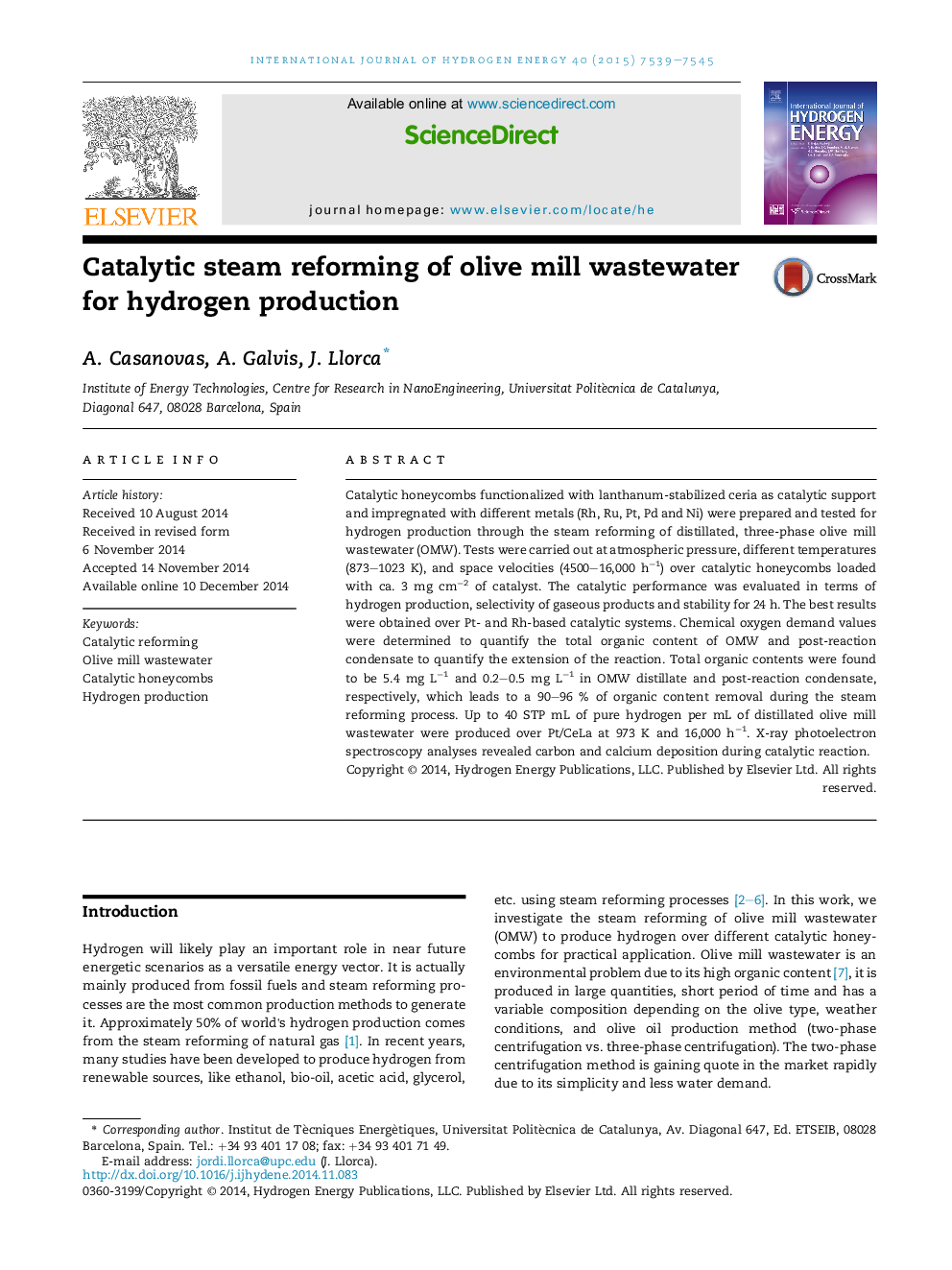| Article ID | Journal | Published Year | Pages | File Type |
|---|---|---|---|---|
| 1279726 | International Journal of Hydrogen Energy | 2015 | 7 Pages |
•Catalytic reforming of distillated olive mill wastewater is feasible to obtain H2.•Catalysts supported over La-stabilized ceria follow the trend: Pt > Rh > Ru >> Ni > Pd.•96% reduction of the organic carbon present in distillated olive mill wastewater.
Catalytic honeycombs functionalized with lanthanum-stabilized ceria as catalytic support and impregnated with different metals (Rh, Ru, Pt, Pd and Ni) were prepared and tested for hydrogen production through the steam reforming of distillated, three-phase olive mill wastewater (OMW). Tests were carried out at atmospheric pressure, different temperatures (873–1023 K), and space velocities (4500–16,000 h−1) over catalytic honeycombs loaded with ca. 3 mg cm−2 of catalyst. The catalytic performance was evaluated in terms of hydrogen production, selectivity of gaseous products and stability for 24 h. The best results were obtained over Pt- and Rh-based catalytic systems. Chemical oxygen demand values were determined to quantify the total organic content of OMW and post-reaction condensate to quantify the extension of the reaction. Total organic contents were found to be 5.4 mg L−1 and 0.2–0.5 mg L−1 in OMW distillate and post-reaction condensate, respectively, which leads to a 90–96 % of organic content removal during the steam reforming process. Up to 40 STP mL of pure hydrogen per mL of distillated olive mill wastewater were produced over Pt/CeLa at 973 K and 16,000 h−1. X-ray photoelectron spectroscopy analyses revealed carbon and calcium deposition during catalytic reaction.
